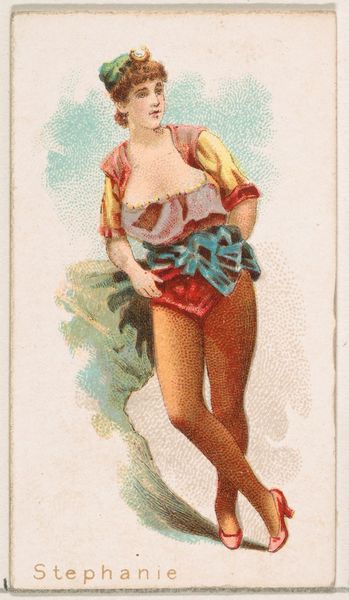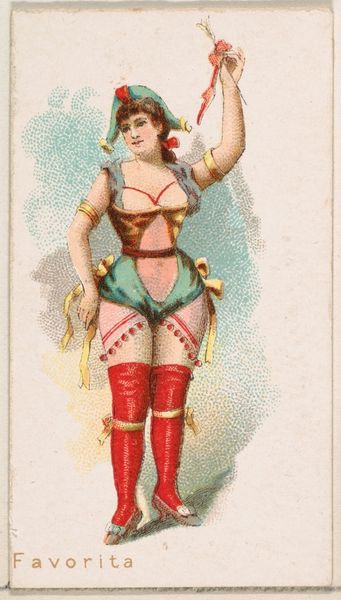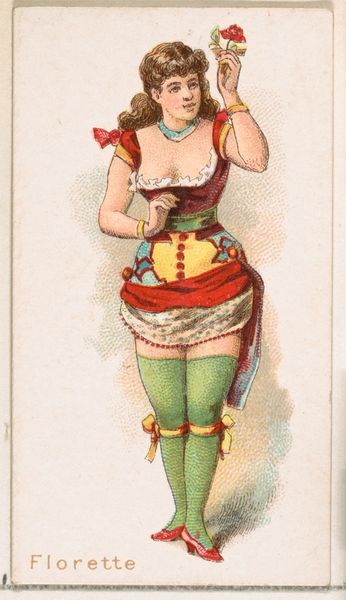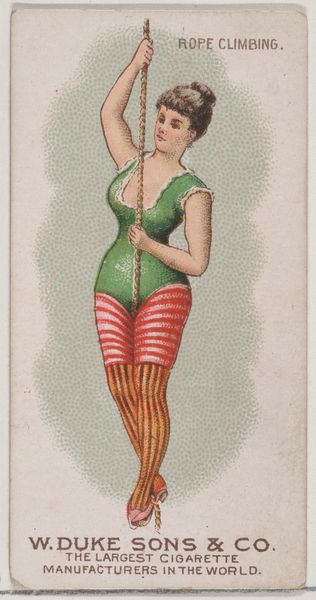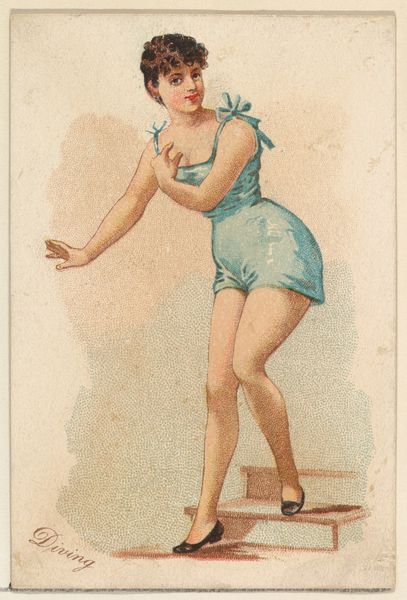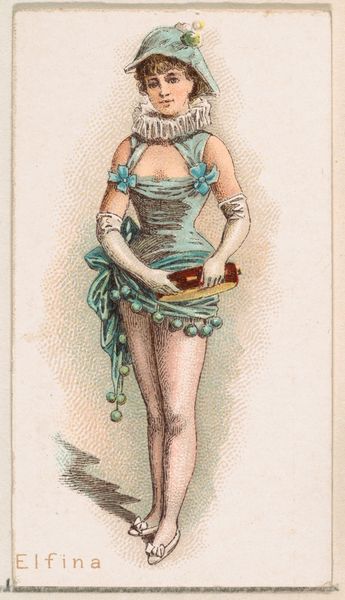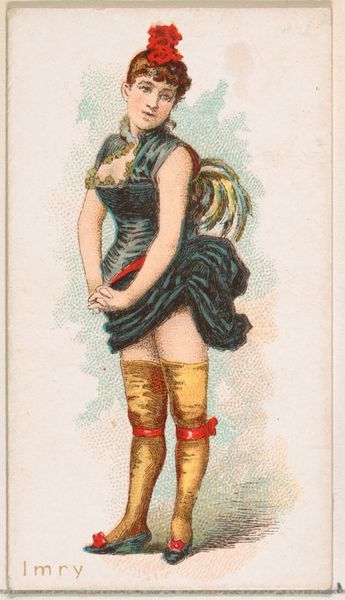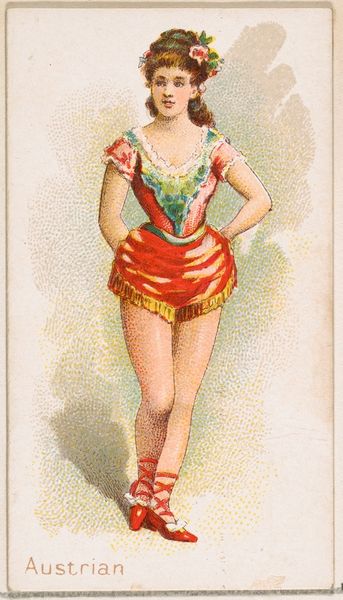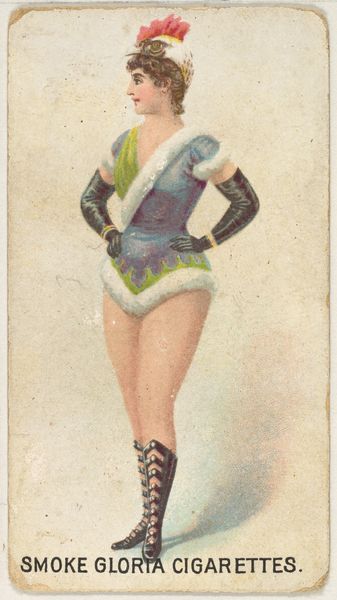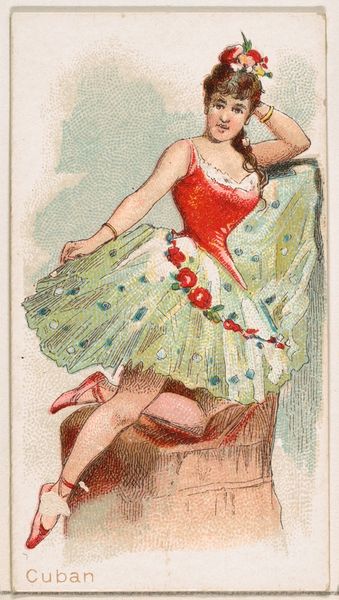
Olga, from the Ballet Queens series (N182) issued by Wm. S. Kimball & Co. 1889
0:00
0:00
Dimensions: Sheet: 2 3/4 × 1 1/2 in. (7 × 3.8 cm)
Copyright: Public Domain
Curator: My initial impression is this work is surprisingly bold and forthright. Editor: Indeed. What we are looking at is a colored print titled "Olga, from the Ballet Queens series (N182)" dating back to 1889. It was produced by William S. Kimball & Co. Curator: Kimball & Co., a tobacco company? It makes sense given its resemblance to those small cards included in cigarette packs of the time. The paper stock itself must be cheap. What kind of process are we talking about to make these affordable mass-produced images? Editor: Precisely! The cards served as a form of advertising, promoting their brand through series of images. In terms of process, color lithography would allow for the cost-effective mass production required for this purpose, turning what we might consider mundane—even disposable—items into collectible works of art in their own right, circulated widely, and perhaps now elevated and preserved by institutions like the Met. Curator: It’s fascinating how it brings together both art and industrial practices. In the same spirit as the popular Ukiyo-e prints circulating at the time that it appears to reference? The materiality and context challenge these ideas around what we call “high art.” And note that despite the supposed elegance of ballet, her pose feels more burlesque—certainly geared towards a male gaze. Editor: And further expanding on that social and cultural history, these trading cards were frequently collected, traded, and inserted into albums—offering a window into the values and visual culture of the time, and raising intriguing questions about the agency of the depicted performer within these representations. The commercial interests shaping those images, for popular distribution to consumers of their product, are very present in my interpretation. Curator: So the seemingly innocent "Olga" tells us much about the late 19th-century societal structures and industrial production of imagery. Editor: I find that reading its context illuminates more about its history and reception. Curator: It is compelling to analyze the means through which the art circulated—shifting the focus away from pure aesthetics. Editor: Together, hopefully these aspects highlight the many layers woven into this artwork’s history and continued relevance.
Comments
No comments
Be the first to comment and join the conversation on the ultimate creative platform.
